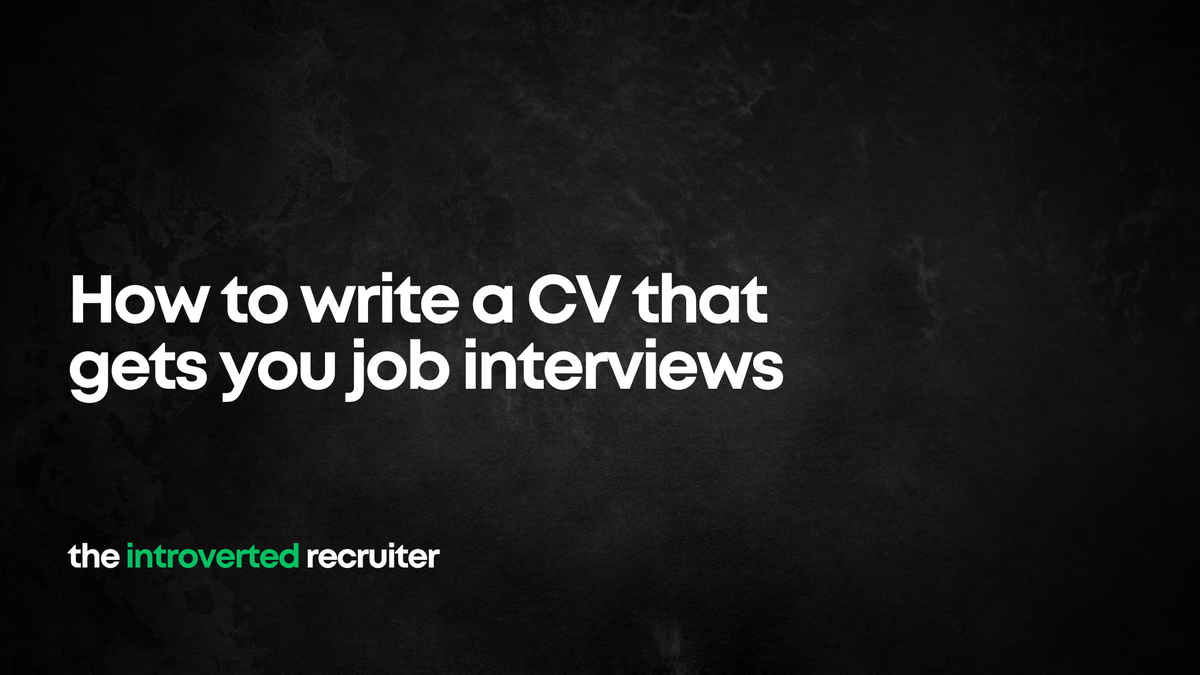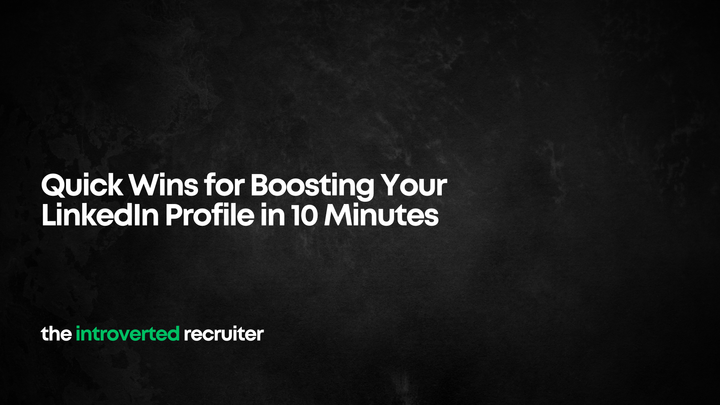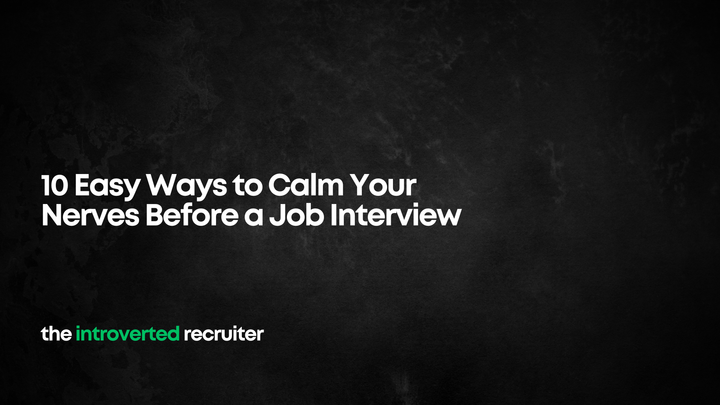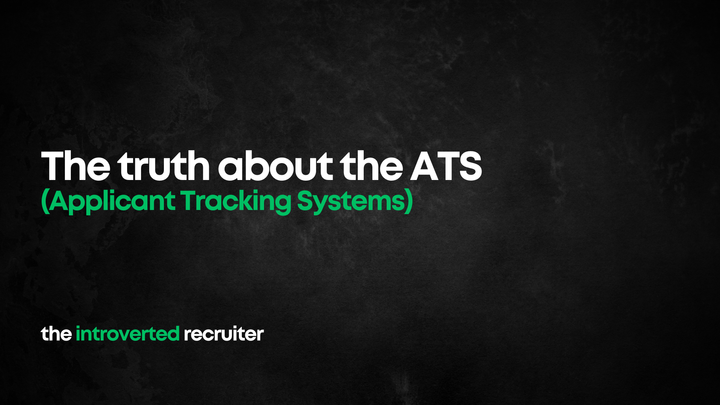How To Write A CV that gets you Job Interviews

How To Write A CV that gets you Job Interviews
How do you write a CV that gets you job interviews?
That your CVs single goal. To get you interviews.
My names Lee, I’ve been in the recruitment and talent acquisition game for almost 2 decades, I provide no-nonsense job search and career advice. If you’re looking for a new job or for really practical career advice, do hit the subscribe button.
The single goal of your CV or Resume is to get you a job interview. Your CV is going to be read by either a recruiter or a hiring manager, sometimes both. So it’s important to understand one thing.
Nobody is reading your CV word for word. They are skim reading it to try and find the information that tells them whether you are suitable for the job or not.
You need to bear this in mind when you’re writing your CV and in this video I’m going to talk you through exactly how to achieve that. Check here for a free CV template that will get you started.
Let’s start with the basics. The top of your CV should include your name, phone number, email address and your location. You don’t need to include your full address, just the town or city that you’re in.
This is important because 1. Recruiters want to know how to contact you and 2. Where you are based, even for fully remote roles. Don’t make them guess, if you’ve applied for an onsite or hybrid role, the recruiter wants to know you’re based close enough to the office – recruiters get hundreds of applications from people who aren’t even in the same country let alone within a reasonable commute. For remote roles, some companies can’t hire in certain countries or locations because they’re not set up to do so.
Make it easy for them and don’t make them guess.
If you have a decent and up to date LinkedIn profile, feel free to include that in the contact info as well.
The next section is your professional summary. This should be a couple of short sentences that explains who you are, what you’ve done and what you’ve achieved. For example mine would read something like this:
“An experienced and driven Talent Acquisition Leader with a strong track record in building high performing recruitment teams by delivery innovation and successful partnerships across multiple business functions. Commercially focused, Co-Founded and successfully scaled a Recruitment SaaS business raising over £1m in funding.
Currently leading the Talent Acquisition strategy for x”
And that’s it, a couple of sentences that tells the read in a nut shell who you are and what you’re about.
The mistake that most people make here is either they don’t include a personal summary at all, or they write one that is way too long.
Next on your CV you want a Key Skill section. Remember I said that recruiters skim read your CV? This is to make it really easy for them to see what your key skills are.
Choose between 6 to 8 key skills and list them as bullets on your CV. Don’t use really generic skills such as “Team Player” or “Highly Organised”. Everybody includes those, try to only include skills you have that are directly relevant to the roles you’re applying for. You may even be able to find them in the job descriptions of the roles you’re applying for.
Now everything we’ve covered so far should comfortably fit onto the first half page of your CV. Which is a good thing – it’s the first thing a recruiter will skim before decided whether to read the rest of the CV.
Don’t worry how many pages your CV is, if you have a strong first page then recruiters will read pages 3, 4 or even page 5.
Next we want to dive into your career history.
We always start with your most recent role first.
Include the Company Name, your job title and the dates you worked there as a subtitle.
This is where you have the opportunity to showcase your experience. The mistake most people make in this section is that they just list their day to day responsibilities and what they did, it reads just like a job description. You need to call out your achievements here too.
Another mistake is that they also provide no context as to the environment they were working in. Which is important right, managing a social media campaign for a bit well known brand is completely different than managing one for a small company with limited reach and budget.
Here’s how we do that, I’m going to read to you exactly what is on my CV word for word for one my roles:
Talent Acquisition Manager leading the talent acquisition strategy across the Group and leading a team of nine Talent Acquisition Professionals.
I joined TalkTalk during a significant time of transformation in that we were relocating 400 roles from London to our new Manchester Headquarters, whilst at the same time building a brand new Talent Acquisition Function to replace the existing RPO.
Coaching and mentoring the team to a more progressive way of acquiring talent has saw:
- Reduced cost per hire from £5432 to £1682
- Reduced time to offer from 37 days to 30 days
- Increased Talent Acquisition Team engagement (Peakon) from 88 to 100 (45 above true benchmark)
This section shows exactly what I achieved in that role and the context and environment in which I achieved it. The team I built hired people faster, more cost effectively and where super happy and engaged. Which is exactly what all companies want from the their TA Leader.
You’ll also notice that I’ve used short paragraphs and bullets sparingly. I see too many CVs that are just a long list of bullets. Bullet points should only be used to call out key information, namely achievements.
Where possible you want to be able to quantify your achievements. In my example including the numbers is way more powerful than just saying “I reduced cost per hire and time per hire”.
Continue listing your experience for each of your jobs in the same way you did on the first.
Now if you’ve had a really long career then you don’t need to do this for all of your jobs. Only for the last 8 to 10 years. For any jobs you’ve had prior to that you can just list the company name, your job title and the dates you were there.
That’s because it’s highly unlikely that the stuff you did 10 years ago is relevant to the job today, businesses change, the landscape changes and technology changes.
After you’ve listed your experience we move on to your education section. Here you only need to include your highest level of education. For example if you have a degree, you don’t need to include your A-Levels or GCSEs. Because you need good GCSEs to be able to do A-Levels and you need good A-Levels to do a degree. If you don’t have much work experience, ie you’re a recent graduate then feel free to include your A-Level results but if you have more than 5 years work experience then nobody really cares that you got a B in Business Studies and an A in Geography.
Include any extra qualification or certifications that are relevant to your career type too, if you’ve got a Project Management or Accountancy Qualification.
Everything we’ve been through is the core of your CV, this is the stuff that the recruiter or hiring manager cares about.
What about hobbies or interests? You don’t need to include them, in fact including them could do you more harm than good.
For example you may put on your CV that you’re a marathon runner, keen tennis player and boxer.
One hiring manager may read that and think “this person must be really disciplined and resilient to have hobbies like that” but another hiring manager may thing “this person isn’t much of a team player, they’re all individual sports”. I have seen both happen and I have seen people rejected because of this.
Of course it’s nonsense, but including hobbies will never be the reason you get an interview but they could be the reason you get rejected. The only time you should include hobbies is if they’re relevant to the role or make you have acquired relevant skills because of that hobby. For example if you spend your spare time fixing cars and you’re applying for a job as a car salesman, then obviously it’s a good thing to include – it shows you have additional knowledge about the thing you’d be selling!
And that is how you write a CV. The most important part is that first page, that includes your professional summary, key skills and most recent role. Don’t worry about how many pages it is, have a 4 page CV that is easy to read because it is well spaced and has a good sized font is a million times better than a 2 page CV that is a nightmare to skim read because of a really small font and it’s all crammed together.
If you found this useful, do hit the subscribe button because there’s a lot more content coming. Cheers!



